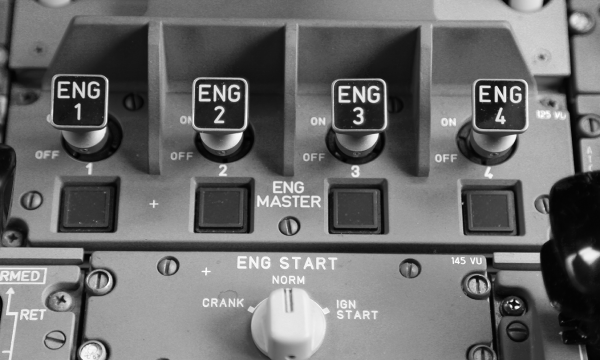(Status as of February 1st, 2023)
The beginning.
With the amendment of the ‘Basic Regulation’ (Regulation (EC) No 2018/11392), the regulation that is the basis for the European Aviation Safety Agency (EASA) and which governs its competencies, the EU in December 2016 extended its own competencies to regulate the operation of unmanned aircraft systems (UAS), which were previously limited to those UAS with a maximum take-off mass (MTOM) of more than 150 kg that are not used for military, customs, police, fire police, search and rescue or experimental operations. EASA thus became the competent authority for approving UAS designs that involve high-risk operations, for issuing Type Certificates and Design Organization Approvals, as for manned aircraft. However, the member states shall remain the certification authorities for certain aspects such as UAS operations or remote-pilot licenses.
Categorization of UAS operations.
This was followed by two EU regulations (Regulations (EC) No 2019/947 and (EC) No 2019/945) that began to specifically govern the operation of UAS throughout Europe. Here, a fundamental distinction was made between three types of UAS operation:
- Open
Operations within this category are not subject to any prior operational authorization. - Specific
Operations require an operational authorization issued by the competent national aviation authority. Depending on the risk associated with the operation, EASA certification of the UAS may be required. - Certified
Requires operator approval, certification of the UAS and, where applicable, the licensing of the remote pilot.
It is the category ‘certified’ which addresses projects on urban air mobility (UAM), including the transport of passengers (air taxis) or cargo. In addition to the new use cases, new technologies and capabilities are also being deployed that have not been previously addressed in commercial aviation rulemakings, such as vertical take-off and landing (VTOL).
Whereas the regulations governing the operation of UAS in categories ‘open’ and ‘specific’ have been completed, the category ‘certified’ is of interest to us in the following.
Implementation of U-Space.
For the safe integration of any UAS into the European airspace, the EU has started the implementation of the U-Space airspace in 2021 by means of three regulations (Regulations (EC) No 2021/664, (EC) No 2021/665 and (EC) No 2021/666). But U-Space is not a conventional airspace such as ‘C’ or ‘D’. Moreover, it is ‘an enabling framework designed to facilitate any kind of routine mission, in all classes of airspace and all types of environment – even the most congested – while addressing an appropriate interface with manned aviation and air traffic control‘ [Source: https://www.sesarju.eu/U-space]. U-Space will establish four mandatory services for airspace users: Network Identification (identify and track all manned and unmanned air traffic), Geo Awareness (assurance of flights only in approved spaces), UAS Flight Authorization (equivalent to air traffic control) and Traffic Information (traffic information and collision avoidance). Additional mandatory services shall also be provided, such as Weather Information.
Types of certified UAS operations.
As per current planning status, UAS operations in the ‘certified’ category shall be grouped into three sub-types [Source/Current planning status as per EASA RMT.0230(C) Issue 4 as of December 19, 2022]:
- Type 1 operations
Instrument flight rules (IFR) operations of UAS for the carriage of cargo in airspace classes A–C (ICAO airspace classification) and taking-off from and/or landing at aerodromes falling under the Basic Regulation. - Type 2 operations
Operations of UAS taking-off and/or landing in a congested (e.g. urban) environment using predefined routes in the U-space airspace (part of the operation could be in a non-congested, e.g. rural, environment). These include operations of unmanned VTOL aircraft carrying passengers (e.g. air taxis) or cargo (e.g. goods delivery services). - Type 3 operations
Same as for type 2 operations with VTOL aircraft with a pilot on board, including operations out of the U-space airspace.
Amendment of commercial air operations regulations for UAS.
Prior to the development of certification specifications for UAS, the regulatory framework is currently being fundamentally revised, particularly for commercial air operations. Thereby, the following basic concepts are incorporated [Source: EASA NPA 2022-06]:
- Innovative Aerial Services (IAS)
Set of operations and/or services that are of benefit to the citizens and to the aviation market, and that are enabled by new airborne technologies; the operations and/or services include both the transportation of passengers and/or cargo and aerial operations (e.g. surveillance, inspections, mapping, telecommunications networking, etc). - Innovative Air Mobility (IAM)
Safe, secure and sustainable air mobility of passengers and cargo enabled by new-generation technologies integrated into a multimodal transportation system. - Urban Air Mobility (UAM)
Subset of IAM operations conducted in to, within or out of urban environments. - VTOL-capable aircraft
Power-driven, heavier-than-air aircraft, other than aeroplane or rotorcraft, capable of performing vertical take-off and landing by means of lift or thrust units used to provide lift during take-off and landing.
A new annex is planned here, Part-IAM (Innovative Air Mobility). Furthermore, changes are planned in Parts ARO, ORO and SPA, including a new subpart, Part SPA.VEMS (Emergency Medical Service Operations with VTOL-capable aircraft). The proposed definition of ‘VTOL- capable aircraft’ also requires a change in the existing definition of ‘helicopter’ in certain regulations [8] in order to ensure a clear distinction between those two aircraft definitions.
Planned are type ratings for VTOL-capable aircraft. A Part-RPL is proposed to cover the requirements for remote-pilot licenses, including an amendment to Annex I (Part-FCL), to include a new license type for manned VTOL aircraft including amendments to Part-ARA, Part-ORA and Part-MED.
It is planned to add the terms ‘command unit’ [11], ‘command unit component’ [12] and ‘command unit installation’ to the terms ‘product, parts and appliances’.
(New Certification Specifications (CS) are planned with CS-UAS, CS-Light-UAS and CS-VTOL).
For the category ‘Certified’, future annexes (III to VIII) are currently drafted.
Changes are required for the safe integration of UAS into the airspace, including a requirement for changing SERA phraseology.
Changes are required for UAS operations at EU aerodromes.
According to EASA’s current planning status, a complete set of regulations is expected by the end of 2028, with the operational regulations to be published before the certification specifications.
EASA does a good job.
From the point of view of both a citizen and a ‘conventional’ airspace user who wants to continue to fly safely in an airplane and perhaps someday board a safe air taxi, but at the same time has no desire to have one or a drone fall on his head, the great regulatory effort EASA is making to integrate the new participants into its airspace is understandable. Contrary to what is often heard, there is no fundamental overregulation (at this point). The EASA regulations are complex because they already take into account many partially divergent interests of individual airspace participants. In addition, the new technologies themselves are complex and, which is very welcome, they are not being developed by a few industry giants. Rather, EASA is creating the basis for a new, diverse market with participants of all sizes. The approach pursued with the U-Space concept of creating interfaces to airspace management for new concepts, technologies and companies is an important and appropriate prerequisite for this. The argument that EASA could be faster with regulation, because other countries are already much further along, can ultimately be answered with the aforementioned arguments. The way of implementation, i.e. the integration into established regulatory structures while retaining established systematics instead of reinventing the proverbial wheel, is successful and allows intuitive access to the new regulations, at least as I can confirm for myself, who deals with European aviation law on a daily basis. My personal opinion: EASA is doing a good job here.
We support you.
GMP supports you throughout the entire process from application to approval, as well as in parts of the application process or specific questions.







